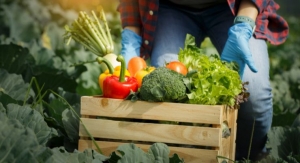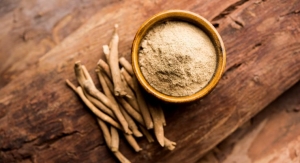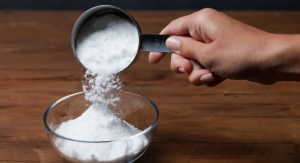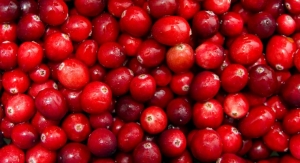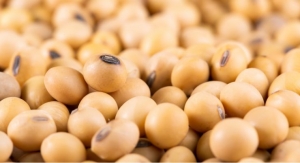By Mike Montemarano, Associate Editor01.20.23
Many researchers and industry observers have been relying on outdated estimates about the number of herbs and botanicals in global commerce. A new publication in Economic Botany has provided updated figures and analyzed shifts from widespread wildcrafting to commercial agriculture.
“A New Global Estimation of Medicinal and Aromatic Plant Species in Commercial Cultivation and Their Conservation Status,” written by Josef Brinckmann, Wolfgang Kathe, Karin Berkhoudt, David Harter, and Uwe Schippmann, provides in-depth estimates on medicinal plant species in cultivation.
The primary goal of the research was to assess the conservation status of herbs globally, in part to help the industry map decisions about how to source ingredients.
Authors Brinckmann, a research fellow at Traditional Medicinals, and Kathe, a nature conservation, social responsibility, and fair trade consultant, discussed their research in an online panel hosted by the American Botanical Council.
Brinckmann said that most literature on wildcrafting and cultivation of plants cited the same data sources from the 20th century, with few large-scale global estimates accounting for changes in recent years.
“We found that there are over 3,200 species in cultivation, which is a huge difference from the mid-2000s estimates,” Brinckmann added, when 700 or so species were listed.
From a total of 13,371 examples of commercial cultivation, the researchers identified 3,227 species that were in trade. Of the identified species, 954 have had a global International Union for Conservation of Nature (IUCN) Red List assessment; 82 species (2.5%) were threatened to some degree according to IUCN Red List categories and criteria.
Of the 3,227 cultivated species, 1,732 (54%) have also been assessed by national red lists, of which 688 are deemed threatened in at least one country.
Additionally, 109 of the cultivated species are included in the Convention on International Trade in Endangered Species (CITES) appendices. Researchers covered all data they could harvest from a total of 162 countries. According to findings, 83.6% of cultivated species were classified as either “Least Concern” or “Lower Risk” in terms of endangerment, while in the global wild population only 65% of plants had this designation.
In terms of collection practices, 42.8% of cultivation was done via agroforestry, while intensive farming (a large amount of resources on a smaller tract of land) accounted for 31.4%. Controlled cultivation accounted for 18.2% of entries, and extensive farming (larger tracts of land with lower quantities of labor and resources) accounted for 5.7%.
“We had to deliberate on this to figure out inclusion criteria, because the medicinal plant trade is characterized by a lot of smallholder farms, some of which are even home gardens, especially with the more valuable species,” Brinckmann said.
The electronic supplementary material connected to the study provides 15,000 line items with in-depth information on geographic data, sometimes down to the region or province in which an herb is grown. “Policymakers, researchers, and companies making informed decisions can look at this and gain plenty of necessary background information,” Brinckmann said. “While things are better than they used to be, far too many folks in the industry dealing with medicinal plants lack the information on geographic origins of species, or whether their material is cultivated or wildcrafted to begin with.”
However, “we’re seeing huge declines in wild collection because people are seeking out alternative livelihoods, and urbanization continues to hit across the globe. Insecurities about labor shortages are also higher in wild crafting models because you have a bigger group of people, whereas cultivation is less affected by personnel shortages.”
This research project was centered in the context of conservation, “so we sought to determine if cultivation was sustainable, or mostly cost-oriented,” Brinckmann said. “We became interested in natural fostering models.” This model is a hybridization of cultivation and wildcrafting, where a controlled population of herbs is grown in areas in which they occur naturally.
“While this model is considered much more experimental, it’s being done quite successfully in several places,” Kathe said. “What I’d like to look at more is the effect that cultivation has on the resources of those who harvest wild plants—wild-collected plants become less valuable as cultivation grows. While we have lots of agroforestry systems, we also have a high number of intensive cultivation in a purely agricultural environment, so what effect might that have on the livelihoods of those who traditionally collect herbs in the wild?”
Due to competition, many international companies believe it goes against their best interest to share data about shipping volumes by location. Additionally, custom codes in many countries don’t provide enough data to estimate the precise species and quantities of herbs in trade.
“In places like India and China, some of the biggest producers of herbs of interest, a huge portion of the trade is informal and there is no data to gather from their local markets,” Brinckmann said.
Additionally, the research team was limited to 10 languages, and many documents used localized names for herbs which couldn’t be attached to specific known species. So, dozens of papers had to be discarded due to the fact that species couldn’t be verified.
“A New Global Estimation of Medicinal and Aromatic Plant Species in Commercial Cultivation and Their Conservation Status,” written by Josef Brinckmann, Wolfgang Kathe, Karin Berkhoudt, David Harter, and Uwe Schippmann, provides in-depth estimates on medicinal plant species in cultivation.
The primary goal of the research was to assess the conservation status of herbs globally, in part to help the industry map decisions about how to source ingredients.
Authors Brinckmann, a research fellow at Traditional Medicinals, and Kathe, a nature conservation, social responsibility, and fair trade consultant, discussed their research in an online panel hosted by the American Botanical Council.
Brinckmann said that most literature on wildcrafting and cultivation of plants cited the same data sources from the 20th century, with few large-scale global estimates accounting for changes in recent years.
A Sustainability Map
“It was important to discern the practices that were going above and beyond the legal definitions of sustainability, and what more is being done beyond meeting criteria for organic cultivation or biodynamic farming,” said Brinckmann.“We found that there are over 3,200 species in cultivation, which is a huge difference from the mid-2000s estimates,” Brinckmann added, when 700 or so species were listed.
From a total of 13,371 examples of commercial cultivation, the researchers identified 3,227 species that were in trade. Of the identified species, 954 have had a global International Union for Conservation of Nature (IUCN) Red List assessment; 82 species (2.5%) were threatened to some degree according to IUCN Red List categories and criteria.
Of the 3,227 cultivated species, 1,732 (54%) have also been assessed by national red lists, of which 688 are deemed threatened in at least one country.
Additionally, 109 of the cultivated species are included in the Convention on International Trade in Endangered Species (CITES) appendices. Researchers covered all data they could harvest from a total of 162 countries. According to findings, 83.6% of cultivated species were classified as either “Least Concern” or “Lower Risk” in terms of endangerment, while in the global wild population only 65% of plants had this designation.
In terms of collection practices, 42.8% of cultivation was done via agroforestry, while intensive farming (a large amount of resources on a smaller tract of land) accounted for 31.4%. Controlled cultivation accounted for 18.2% of entries, and extensive farming (larger tracts of land with lower quantities of labor and resources) accounted for 5.7%.
“We had to deliberate on this to figure out inclusion criteria, because the medicinal plant trade is characterized by a lot of smallholder farms, some of which are even home gardens, especially with the more valuable species,” Brinckmann said.
The electronic supplementary material connected to the study provides 15,000 line items with in-depth information on geographic data, sometimes down to the region or province in which an herb is grown. “Policymakers, researchers, and companies making informed decisions can look at this and gain plenty of necessary background information,” Brinckmann said. “While things are better than they used to be, far too many folks in the industry dealing with medicinal plants lack the information on geographic origins of species, or whether their material is cultivated or wildcrafted to begin with.”
Wild Collection in Decline
Several plant species underwent major shifts from wildcrafting to cultivation, and for many different reasons. Some species experience more resilience to weather conditions in their native environment, whereas agriculture allows for many ways to control for desired active compounds, Kathe noted.However, “we’re seeing huge declines in wild collection because people are seeking out alternative livelihoods, and urbanization continues to hit across the globe. Insecurities about labor shortages are also higher in wild crafting models because you have a bigger group of people, whereas cultivation is less affected by personnel shortages.”
This research project was centered in the context of conservation, “so we sought to determine if cultivation was sustainable, or mostly cost-oriented,” Brinckmann said. “We became interested in natural fostering models.” This model is a hybridization of cultivation and wildcrafting, where a controlled population of herbs is grown in areas in which they occur naturally.
“While this model is considered much more experimental, it’s being done quite successfully in several places,” Kathe said. “What I’d like to look at more is the effect that cultivation has on the resources of those who harvest wild plants—wild-collected plants become less valuable as cultivation grows. While we have lots of agroforestry systems, we also have a high number of intensive cultivation in a purely agricultural environment, so what effect might that have on the livelihoods of those who traditionally collect herbs in the wild?”
Complications & Challenges
There were plenty of complexities that led to some limitations in the new global estimate, Kathe and Brinckmann noted.Due to competition, many international companies believe it goes against their best interest to share data about shipping volumes by location. Additionally, custom codes in many countries don’t provide enough data to estimate the precise species and quantities of herbs in trade.
“In places like India and China, some of the biggest producers of herbs of interest, a huge portion of the trade is informal and there is no data to gather from their local markets,” Brinckmann said.
Additionally, the research team was limited to 10 languages, and many documents used localized names for herbs which couldn’t be attached to specific known species. So, dozens of papers had to be discarded due to the fact that species couldn’t be verified.


